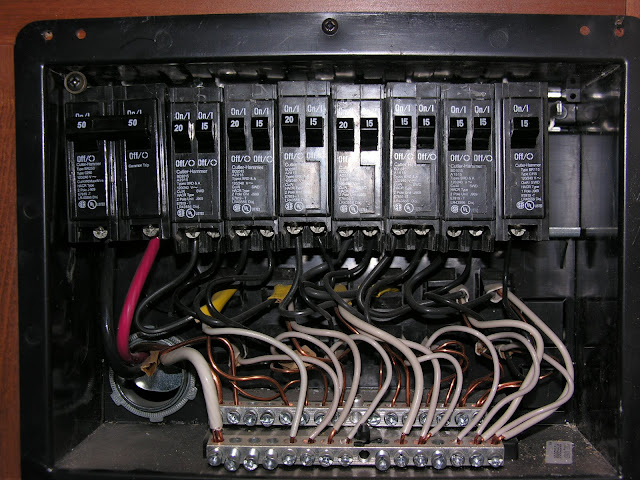wyleyrabbit
Well-known member
Yeah, we've been to a couple of RV parks where the residents run the biggest portable propane tanks I've ever seen. They were 350 pound tanks, if I remember right.
I have been given a Electric Meter at one campground with an Outlet on one side and a pigtail plug on the other. Since I was there for a month and getting their lower monthly rate... the solution for the campgrounds was to have a portable meter available for Month long RV Stays.
This method worked very well... just plug in the Electric Meter to a properly installed 30 or 50 Amp outlet on the house electrical system... and then plug the RV's electrical cord into the portable Meter's outlet. With the meter reading at hand... subtract the reading you started with the end of month use... multiply the KW used by the Rate the Electric Company charges.
Any qualified electrician could put together this type of Electrical Meter. But if your not able to locate a Meter... there are other choices. Here are a couple links...
(Note: this type is also sold on Ebay)
http://www.metersusa.com/WattMeters/ResMeters.htm?gclid=CL2NtZ_r3Z4CFY915QodQzDGJg
http://www.theenergydetective.com/what/overview.html
It's not an easy question to answer... For each electrical appliance you use... the cost changes. If your using electric heaters to stay warm... costs really increase... If you need to run the A/C for cooling...
Perhaps it would be just as easy to just Split the monthly costs...
The Portable Meter was exactly like used on a Home. Meter Base was the size for a Meter... the Pigtail Connection was like used for an RV. If you use 30 Amp... a cord used for a Dryer would do... if you need 50 Amp... one for a Electric Range/Oven would do. The Outlet was a square work box with a outlet installed... wires ran from the Meter base to the Outlet box with a short connection of Conduit. All Bolted to a plywood board with a handy carrying handle attached to the top edge. Guess it could be mounted on a wall if this would be better for your application.
The Meter base and Electrical Parts could be obtained from a Home Building Center. The House Meter will probably be gotten from an Electric Company.
If this link works... here is what Home Depot sells... But looking at this one... the one the Campground used... was Meter Only Base... very short... Square in fact. It did not have a place for Breakers below.
http://www.homedepot.com/h_d1/N-5yc...splay?langId=-1&storeId=10051&catalogId=10053
First order of business would be to locate a Electric Meter.... No borrowing a Neighbors !!
Marv
Here is the breaker box the far left breaker is the main trailer breakers

So, if I measure everything coming into those two 50-amp breakers, I'm measuring all power consumption from the shore, right? The inverter is hooked up AFTER the breaker box, I'm assuming.
Correct, The converter is just pluged into one of the 30Amp outlets in the basement.
Also, is each unit/"pair" of breakers a phase (looks like there's two breakers per breaker "unit")?
Correct again, each unit(pair of breakers) is on a different phase. so units 1,3,5,and 7 are on + phase and units 2,4,6, and 8 are on - phase.
And the breaker box is accessed from inside the Big Horn?
The breaker box is in the base of a cabinet inside.
Natesi,
Maybe a little off-topic but..
Before you go building a little RV park on the side of this house, have you looked into the legality of living there? If the property isn't zoned for multiple residences, then your skating on thin ice. I know the ordinance is not well enforced in some areas, but all it takes is one peavey neighbor...
